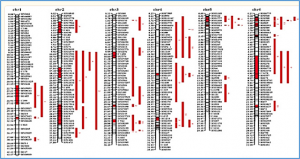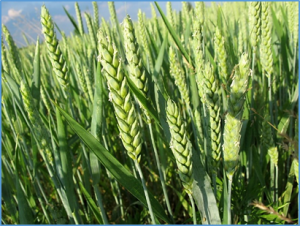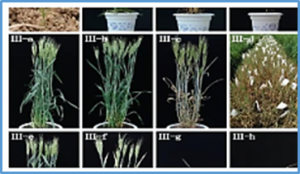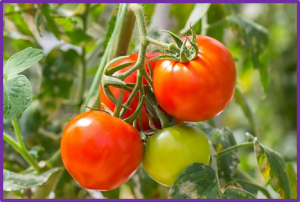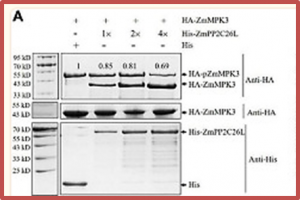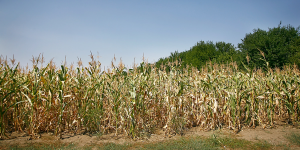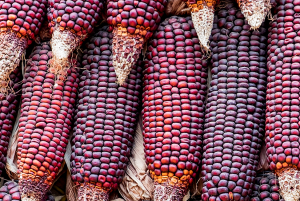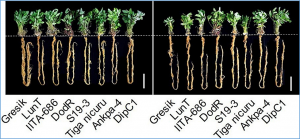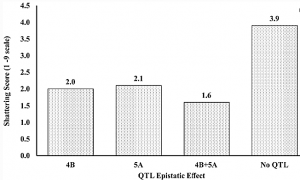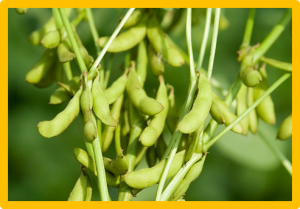Due to global warming, high temperature is a significant environmental stress for rice production. Rice (Oryza sativa L.), one of the most crucial cereal crops, is also seriously devastated by Magnaporthe oryzae. Therefore, it is essential to breed new rice cultivars with blast and heat tolerance. Although progress had been made in QTL mapping and RNA-seq analysis in rice in response to blast and heat stresses, there are few reports on simultaneously mining blast-resistant and heat-tolerant genes.
A multi-environment framework to evaluate the adaptation of wheat (Triticum aestivum) to heat stress
Adaptation of wheat to heat stress is an important component of adaptation in variable climates such as the cereal producing areas of Australia. However, in variable climates stress conditions may not be present in every season or are present to varying degrees, at different times during the season. Such conditions complicate plant breeders’ ability to select for adaptation to abiotic stress. This study presents a framework for the assessment of the genetic basis of adaptation to heat stress conditions with improved relevance to breeders’ selection objectives.
Hybrid necrosis of wheat is caused by the interaction of two dominant complementary genes Ne1 and Ne2 present separately in normal parents and is regarded as a barrier to gene transfer in wheat breeding. However, the necrosis alleles still occur at a high frequency in modern wheat varieties. In this study, we constructed two high-density genetic maps of Ne1 and Ne2 in winter wheat
Flowering is a critical agricultural trait that substantially affects tomato fruit yield. Although drought stress influences flowering time, the molecular mechanism underlying drought-regulated flowering in tomato remains elusive. In this study, we demonstrated that loss of function of tomato OPEN STOMATA 1 (SlOST1), a protein kinase essential for abscisic acid (ABA) signaling and abiotic stress responses, lowers the tolerance of tomato plants to drought stress. slost1 mutants also exhibited a late flowering phenotype under both normal and drought stress conditions
Serine/threonine protein phosphatase 2C (PP2C) dephosphorylates proteins and plays crucial roles in plant growth, development, and stress response. In this study, we characterized a clade B member of maize PP2C family, i.e., ZmPP2C26, that negatively regulated drought tolerance by dephosphorylating ZmMAPK3 and ZmMAPK7 in maize. The ZmPP2C26 gene generated ZmPP2C26L and ZmPP2C26S isoforms through untypical alternative splicing.
Fifteen million farmers in India engaged in Maize cultivation. India would require 45 MMT of Maize by 2022. But, only 15% of cultivated area of maize is under irrigation and water shortage has been a challenge for sustainability of maize production. Water deficit stress (WDS) during pre-flowering and grain filling stages massively affects the plant performance due to imprecise traits function. Thus, the effect of WDS on non-drought tolerant (NDT) and drought tolerant (DT) maize lines were investigated
Efforts to understand the phenotypic transition that gave rise to maize from teosinte have mainly focused on the analysis of aerial organs, with little insights into possible domestication traits affecting the root system. Archeological excavations in San Marcos cave (Tehuacán, Mexico) yielded two well-preserved 5,300 to 4,970 calibrated y B.P. specimens (SM3 and SM11) corresponding to root stalks composed of at least five nodes with multiple nodal roots and, in case, a complete embryonic root system.
Bambara groundnut [Vigna subterranea (L.) Verdc.] is grown in rainfed production systems and suffers from periodic drought stress (DS), leading to yield reductions. Natural genotypic variation for root traits is essential for adaptation to water deficit conditions. However, root traits have not been fully utilised as selection criteria to improve DS in bambara groundnut. The present study explored the natural genotypic variation found in single genotypes of bambara groundnut derived from landraces to identify adaptive differences in tap root length (TRL)
Spike shattering can cause severe grain yield loss in wheat. Development of cultivars with reduced shattering but having easy mechanical threshability is the target of wheat breeding programs. This study was conducted to determine quantitative trait loci (QTL) associated with shattering resistance, and epistasis among QTL in the populations Carberry/AC Cadillac and Carberry/Thatcher. Response of the populations to spike shattering was evaluated near Swift Current, SK, in four to five environments.
For introgression of new transgenic traits to field cultivars, adding new DNA to an existing transgene locus would reduce the number of segregating loci to reassemble back into a breeding line. We described previously an in planta transgene stacking system using the Bxb1 integrase to direct new DNA into a genomic target, but for this system to operate, the target locus must have a preexisting recombination site for Bxb1-mediated integration.


 Curently online :
Curently online :
 Total visitors :
Total visitors :
